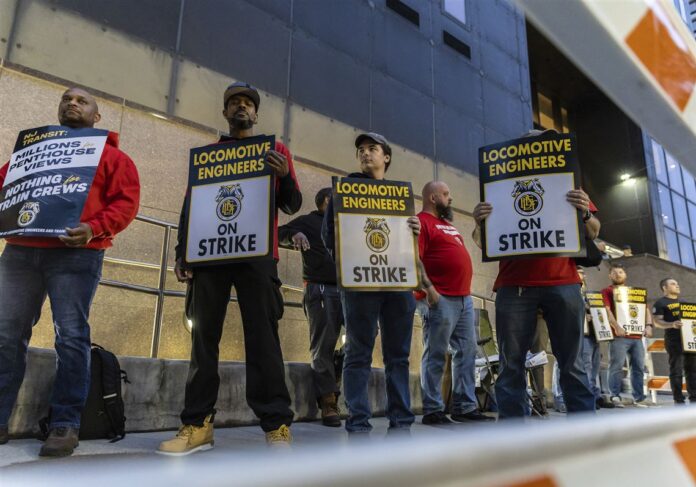At 12:01 a.m. on Friday, May 16, 2025, New Jersey entered uncharted territory: the first major transit strike in over four decades. Approximately 450 locomotive engineers, represented by the Brotherhood of Locomotive Engineers and Trainmen (BLET), walked off the job after contract negotiations with NJ Transit failed to yield an agreement. This unprecedented strike has left over 350,000 daily commuters stranded, highlighting deep-seated issues within the state’s transportation infrastructure.

The Times of India+1WSJ+1The Times of India+5New York Post+5Wikipedia+5
The Strike: Causes and Consequences
The strike stems from a prolonged wage dispute. Engineers have not received a pay increase since 2019, and the rejected tentative agreement offered annual raises of 2% to 4% along with retroactive payments. Union officials argue that these proposed salaries are not equitable compared to those at the Long Island Rail Road. NJ Transit and state officials claim that meeting the union’s demands would cost an additional $684 million and necessitate fare hikes. New Jersey Monitor+4WSJ+4Politico+4
The immediate impact has been severe. All NJ Transit train services have been suspended, including the Metro-North Pascack Valley Line and Port Jervis Line. Commuters are left scrambling for alternative transportation, with limited options available. NJ Transit has advised commuters to work from home if possible, as the enhanced bus services can only accommodate about 20% of the usual rail ridership. The Times of IndiaThe Times of India+3Wikipedia+3Daily Record+3WSJ
Economic Ripple Effects
The strike’s ramifications extend beyond daily commuters. The Partnership for New York City estimates that each hour of delay costs employers nearly $6 million. The financial services sector, a significant portion of New York City’s economy, is particularly vulnerable, with many workers relying on NJ Transit for their daily commute. Sierra Club+1New York Post+1ABC7 New York+1Bloomberg+1Bloomberg+1The Times of India+1
Additionally, the strike has led to increased traffic congestion as commuters turn to alternative modes of transportation. An estimated 10,000 additional vehicles are expected on the roads each hour, exacerbating existing traffic issues and contributing to longer commute times. FOX 5 New York+1Politico+1
Political Implications
Governor Phil Murphy’s administration faces significant scrutiny over its handling of the situation. Critics argue that the state’s failure to address labor concerns and invest in infrastructure has led to this crisis. The Sierra Club has called the strike a “failure of the Christie Administration” to negotiate a settlement, leading to what they describe as “carmageddon” for major parts of the state. Sierra Club
This event underscores the urgent need for comprehensive transportation reform in New Jersey. Investing in modernizing the rail fleet, improving labor relations, and expanding alternative transportation options are critical steps toward preventing future disruptions.

Looking Ahead
As negotiations continue, the focus must shift toward long-term solutions that address the root causes of the strike. This includes fair compensation for workers, investment in infrastructure, and a commitment to sustainable transportation policies. The current crisis serves as a stark reminder of the vulnerabilities in New Jersey’s transportation system and the need for proactive measures to ensure its resilience.
For more insights into the intersection of transportation, technology, and business in New Jersey, visit our Technology & Business section.
Sources











